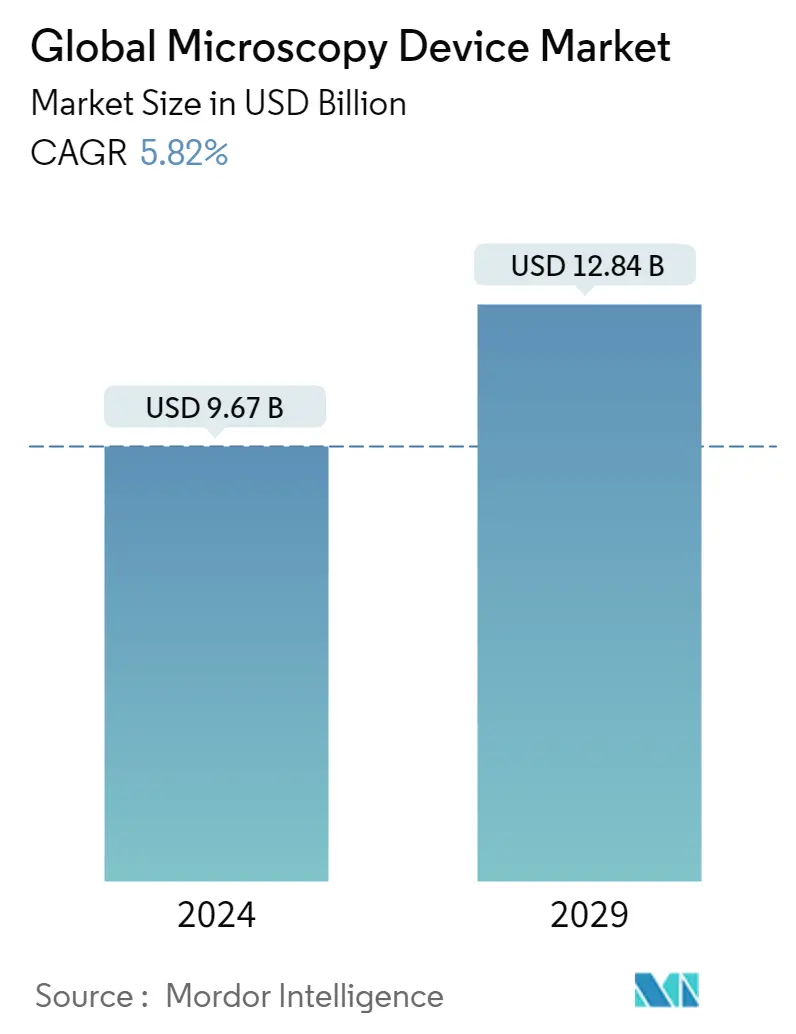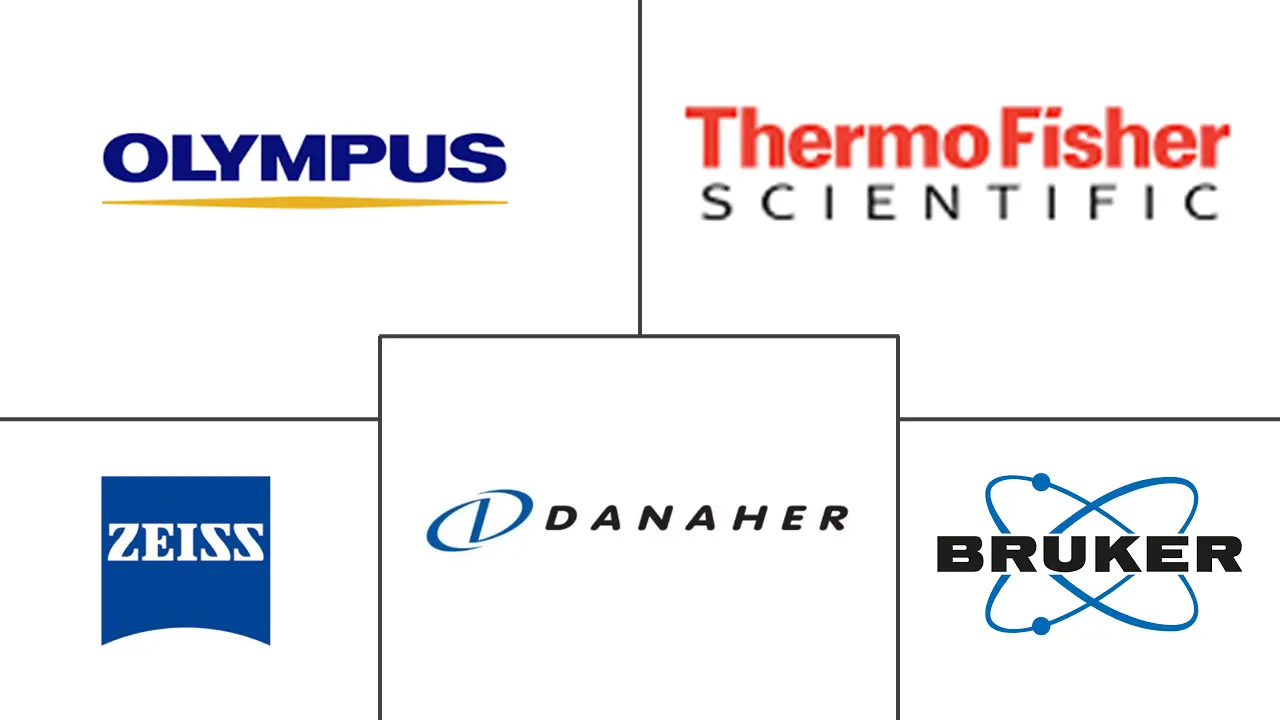Market Size of Global Microscopy Device Industry

| Study Period | 2019 - 2029 |
| Market Size (2024) | USD 9.67 Billion |
| Market Size (2029) | USD 12.84 Billion |
| CAGR (2024 - 2029) | 5.82 % |
| Fastest Growing Market | Asia-Pacific |
| Largest Market | North America |
Major Players
*Disclaimer: Major Players sorted in no particular order |
Need a report that reflects how COVID-19 has impacted this market and its growth?
Microscopy Devices Market Analysis
The Global Microscopy Device Market size is estimated at USD 9.67 billion in 2024, and is expected to reach USD 12.84 billion by 2029, growing at a CAGR of 5.82% during the forecast period (2024-2029).
The microscopy devices are mainly used in the research and development activities in different industrial areas such as pharmaceuticals, electronics, life sciences, and others, and as there was lockdown or lockdown like restrictions around the world due to the COVID-19 pandemic, these activities were negatively impacted, and thus impacting the microscopy devices market around the world shortly. Although, the electron and other microscopes were very crucial in the structural analysis of the SARS-COV-2 virus which was very important in the development of diagnostics tests and vaccines against COVID-19. For example, according to the research article published in September 2020 in the 'Nature' journal, the researchers used high-resolution scanning electron microscopy for the ultrastructural analysis of the SARS-CoV-2 virus' interaction with the host cell. Also, due to COVID-19, the manufacturing, sales, and installment of the new microscopy devices were negatively impacted but with the increasing vaccination and decreasing infection cases, the market is expected to recover soon from the impact of COVID-19.
The technological advancements in the field of microscopy and improvements in the available devices are one of the major driving growth factors for the studied market along with the increasing research and development activities and investments in the area of nanotechnology and life sciences, globally. For instance, in December 2021, researchers from École Polytechnique fédérale de Lausanne (EPFL), Max Planck Institute for Biophysical Chemistry, and the University of Göttingen, developed a transmission electron microscope (TEM) with an advanced technique that enables a strong modulation of the electron beam, with only a few milli-Watts from a continuous wave laser. The approach constitutes a more simplification and efficiency increase in the optical control of electron beams, which can be seamlessly implemented in a regular transmission electron microscope and could make the scheme much more widely applicable. In the life science segment, the use of microscopy devices in the identification and diagnosis of microorganisms and viruses causing disease in humans, animals, or plants are increasing which will complement the growth of the market.
Furthermore, rising investments in the field of microscopy will further support new innovations which will b a key driving factor during the study period. For instance, in November 2021, Surrey won GBP 0.6 million Core Equipment Award from the Engineering and Physical Sciences Research Council (EPSRC) to develop a transmission electron microscope that allows users to see materials in three dimensions and to employ a host of other imaging techniques and fast chemical analysis, enabling new insights into the mechanisms and processes that happen within materials.
A wide variety of technologies associated with microscopes has opened up multiple lines of investigations. Electron cryo-microscopy has the ability toreveal the atomic structure of biomolecules such as proteins In addition Fluorescence microscopy has helped biologists to observe live samples in real-time. Moreover, an increasing number of inventions has also led to several advances such as the visualization of a broad range of morphologic features.
Also, the companies which offers microscopy devices are actively involved in the research and development of new innovative solutions for the studied market to have an edge over other competitors which will boost the growth of the microscopy devices market during the forecast period. For instance, in November 2021, JEOL Ltd. launhced a new scanning electron microscope (SEM), the JSM-IT510 series which allows the user to simply select the acquisition conditions and field of view for the SEM image, and then the SEM image is automatically acquired, thus making routine work more efficient. The Low-vacuum Hybrid Secondary Electron Detector (LHSED) in this microscope collects both electron and photon signals providing an image with high S/N and enhanced topographic information even under a low vacuum.
Other factors which will be the contributing factor for the growth of the microscopy device market are its demand in the electronics industry in the development of the semiconductor chips, in the material science and others. However, high cost associated with the advanced microscopy devices will impede the growth of the microscopy device market during the forecast period.
